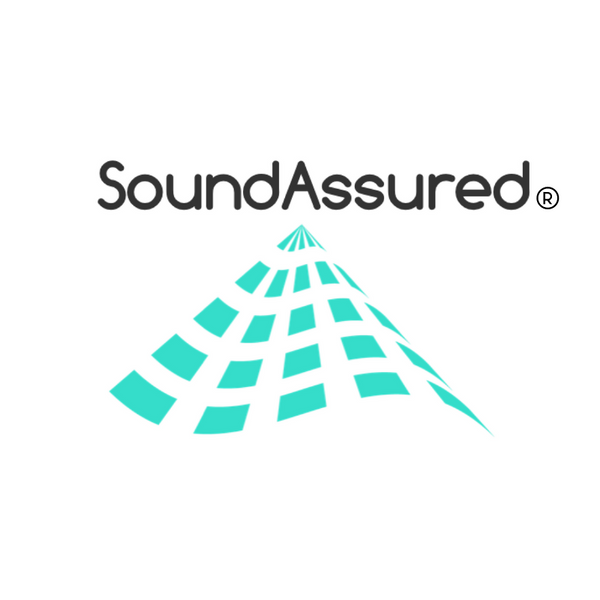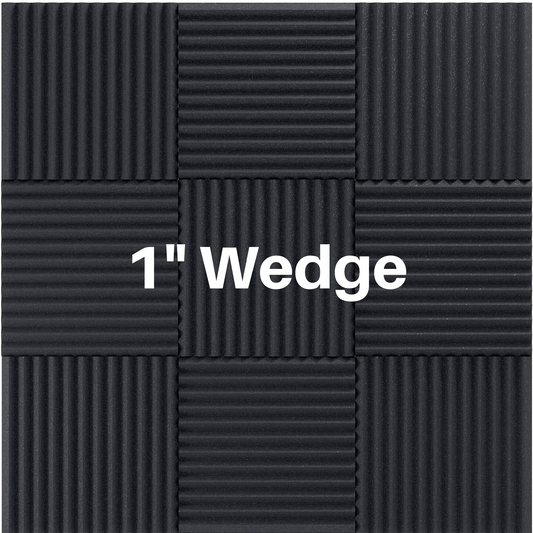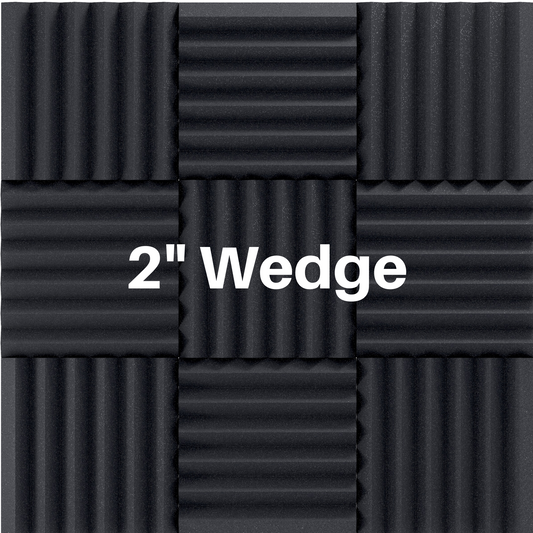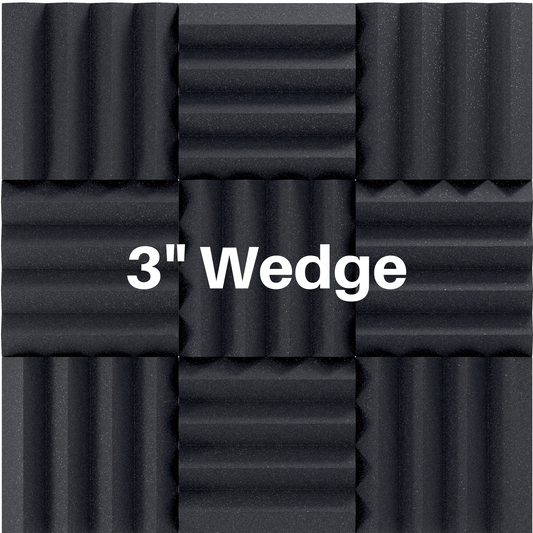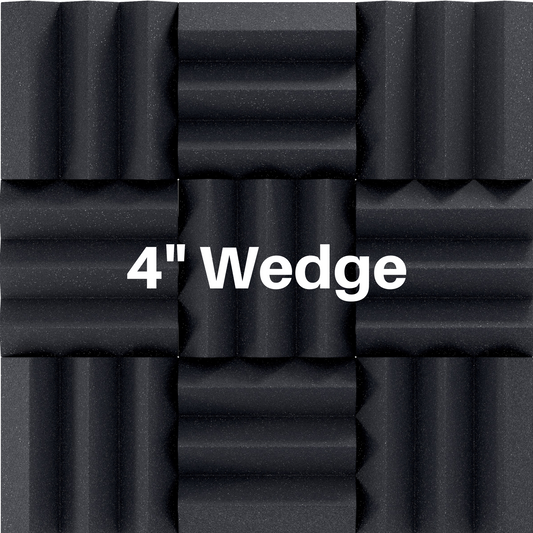Best Reverberation Time for Your Room?
Share
When it comes to acoustics, one of the most critical factors to consider is reverberation time (sometimes abbreviated as RT60 or T60). Reverberation time refers to the amount of time it takes for sound to decay by 60 decibels after the sound source has stopped. Getting the T60 right can dramatically improve the sound quality in your room, whether it’s a home theater, recording studio, office space, or classroom.
But what is the ideal reverberation time for your room? Let’s figure it out!
What Is Reverberation?
Reverberation occurs when sound reflects off surfaces like walls, ceilings, and floors. While some reverberation adds a sense of space and liveliness to the room, too much can cause muddiness and echoes making it hard to hear someone talking or difficult to enjoy music. On the other hand, too little reverberation can make a room sound dry and lifeless.
Factors Affecting Reverberation Time
- Room Size and Shape: Larger rooms generally have longer reverberation times due to the greater distance sound waves travel before they come in contact with a surface. The shape of the room can also affect how sound reflects and dissipates. Rooms with parallel surfaces like square and rectangle rooms often have more problems.
- Surface Materials: Hard surfaces like glass, tile, and concrete reflect a lot of sound, increasing reverberation time. Soft materials like carpets, curtains, and acoustic panels absorb sound, reducing reverberation.
- Furniture and Decor: The amount and type of furniture in a room can impact reverberation. Upholstered furniture absorbs sound, while hard, flat surfaces reflect it.
- Purpose of the Room: Different activities require different T60. For instance, a classroom or office should have a shorter T60 to ensure clear speech, while a theater hall benefits from a longer T60 to enhance musical performance.
Ideal Reverberation Times for Different Spaces
The chart below shows some guidelines for optimum reverberation time in various settings.

- Recording Studio: A recording studio typically needs an T60 of 0.4 to 0.6 seconds. This ensures accurate sound reproduction and minimal coloration, allowing for high-quality recordings.
- Classroom: To enhance speech intelligibility, classrooms should have an T60 of 0.6 to 0.8 seconds. This helps students hear the teacher clearly without struggling to understand due to echoes.
- Concert Hall: Concert halls benefit from longer T60s, usually between 1.2 and 2.4 seconds. This range adds richness and warmth to musical performances, making them sound more engaging and full.
- Office Space: Offices require an T60 of around 0.6 to 0.8 seconds to ensure clear communication and reduce background noise, which can be distracting.
How to Measure Reverberation Time
Don't want to fuss with the calculations? Let us do the work for you! Click below for a FREE room analysis!
Reverberation Time Formula
To find the reverberation time (T60) of a room we use the equation:
T60 = 0.16V/A
- T60 represents the Reverberation Time
- V represents the total Volume of the room
- A represents the total Absorption of the room
The way we calculate reverberation time here is by using the total absorption of a room. This does not require any testing, microphones or speakers. You can find this by simply measuring the size of each surface in the room and finding the absorption coefficient of each material.
See below for a chart displaying absorption coefficients of common materials.

We will go over a specific example below if you want to see how to calculate long form. However, many people prefer to use a reverberation time calculator.
Reverberation Time Calculator
Check out our new and easy to use reverb calculator web app!
Our other free reverberation time calculator is in the form of an excel spreadsheet. You can open this with Microsoft excel or in Google sheets.
Below is a video explaining how to use the FREE T60 CALCULATOR!
Example Reverb Time Calculation Long Form:
Tip: to convert feet to meters take your measurement (in feet) and divide it by 3.28.
Example Room:
4 m wide x 5 m long x 2.5 m high
Building Materials:
Floor: carpet - thick no pad (NRC = 0.30)
Ceiling: gypsum wallboard (NRC = 0.05)
Wall 1: gypsum wallboard (NRC = 0.05)
Wall 2: gypsum wallboard (NRC = 0.05)
Wall 3: gypsum wallboard (NRC = 0.05)
Wall 4: gypsum wallboard (NRC = 0.05)
Floor: 4 m x 5 m = 20 m2 x 0.30 NRC = 6
Ceiling: 4 m x 5 m = 20 m2 x 0.05 NRC = 1
Wall 1: 4 m x 2.5 m = 10 m2 x 0.05 NRC = 0.5
Wall 2: 4 m x 2.5 m = 10 m2 x 0.05 NRC = 0.5
Wall 3: 5 m x 2.5 m = 12.5 m2 x 0.05 NRC = 0.625
Wall 4: 5 m x 2.5 m = 12.5 m2 x 0.05 NRC = 0.625
Total absorption in the room is 6 + 1 + 0.5 + 0.5 + 0.625 + 0.625 = 9.25
To find the reverberation time (T60) of the example room we use the equation:
T60 = 0.16V/A
A = total absorption = 9.25
V = Volume = 4 m x 5 m x 2.5 m = 50 m3
T60 = 0.16(50) / 9.25
T60 = 0.86 seconds
This example room would need treated with some sound absorbing materials to bring the T60 down below 0.5 seconds for good speech clarity.
How to Adjust Reverberation Time
Adjust with Acoustic Treatments
If your room’s T60 is too long, consider adding acoustic panels, bass traps, and diffusers to absorb excess sound. If the T60 is too short, you might need to remove some absorptive materials or add reflective surfaces.
Acoustic Treatments for Excess Reverberation
- Acoustic Panels: These are made of sound-absorbing materials such as fiberglass or foam. They can be mounted on walls and ceilings to reduce reflections and lower the T60. Acoustic panels are particularly effective at mid to high frequencies.
- Bass Traps: Bass traps are designed to absorb low-frequency sound waves that tend to accumulate in corners. Placing bass traps in the corners of a room can help balance the low end of the sound spectrum, reducing boominess and muddiness.
- Diffusers: Diffusers scatter sound waves, reducing the intensity of reflections without deadening the room. They help maintain a natural, lively sound by breaking up standing waves and flutter echoes. Diffusers are often used in combination with absorptive treatments to create a well-balanced acoustic environment.
Strategies for Reducing Absorption
- Remove Absorptive Materials: If your T60 is too short, start by removing or reducing the number of soft furnishings, thick carpets, or heavy curtains. These materials absorb sound and can make a room sound too dry.
- Add Reflective Surfaces: Introduce hard, reflective surfaces like glass, blinds, hardwood, or tiles to increase reflections and lengthen the T60. For instance, replacing carpet with hardwood flooring or adding large mirrors can enhance the liveliness of the room.
- Use Less Absorbent Furniture: Opt for furniture with less absorbent materials. For example, using leather or vinyl-covered furniture instead of fabric-covered options can help reflect more sound.
- Strategic Placement of Reflective Objects: Place bookshelves, paintings, or other hard objects strategically around the room to reflect sound waves. This can help achieve a balanced sound without over-absorbing certain frequencies.
